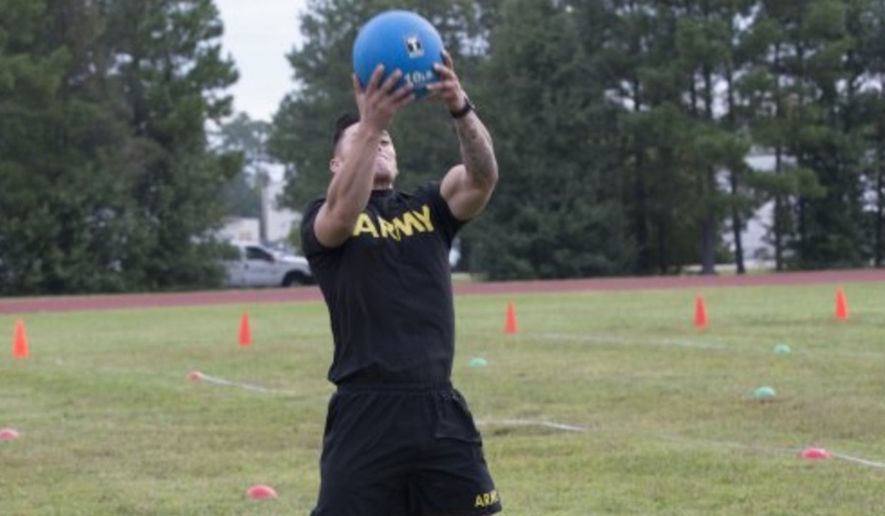Military officials say the U.S. Army will roll out its new and improved fitness test by October 2020.
The Army Physical Fitness Test that soldiers have known since the 1980s — 2 minutes of pushups; 2 minutes of situps; the 2-mile run — will be retired before the end of the decade. While the 2-mile run will still conclude the assessment, five other events seen as a better predictor of successfully completing combat tasks have been added.
“The Army Combat Fitness Test [ACFT] will ignite a generational, cultural change in Army fitness and become a cornerstone of individual Soldier combat readiness,” Maj. Gen. Malcolm Frost, commander of the Army’s Center of Initial Military Training, said Monday. “It will reduce attrition and it will reduce musculoskeletal injuries and actually save, in the long run, the Army a heck of a lot of money.”
ACFT’s events include:
- Strength deadlift: “With a proposed weight range of 120 to 420 pounds … ACFT will require Soldiers to perform a three-repetition maximum deadlift … and the weights will be increased.”
- Standing power throw: “Soldiers toss a 10-pound ball backward as far as possible to test muscular explosive power that may be needed to lift themselves or a fellow Soldier up over an obstacle or to move rapidly across uneven terrain.”
- Hand-release pushups: “Soldiers start in the prone position and do a traditional pushup, but when at the down position they release their hands and arms from contact with the ground and then reset to do another pushup.”
- Sprint/drag/carry: “Soldiers will perform sprints, drag a sled weighing 90 pounds, and then hand-carry two 40-pound kettlebell weights.”
- Leg tuck: “Soldiers lift their legs up and down to touch their knees/thighs to their elbows as many times as they can.”
- 2-mile run.
“The current PT test is only a 40 percent predictor of success for performing in combat and executing warrior tasks and battle drills,” Maj. Gen. Frost said, Army News Service reported. “This test is approximately an 80 percent predictor of performing based on our ability to test the physical components of combat fitness.”
Michael McGurk, director of research and analysis at Center for Initial Military Training, told ANS that scoring would differ depending on each soldier’s military occupational specialty.
“The more physically challenging your MOS, the more you’ll be required to do at the minimum levels,” Mr. McGurk said. “In 1980, running shoes were relatively a new invention. The Army was still running in boots for the PT test back then. Change is difficult, but we’re an Army that adapts well to change.”
Over 2,000 soldiers have already taken the test and provided feedback to Army Training and Doctrine Command and Forces Command, ANS reported.
• Douglas Ernst can be reached at dernst@washingtontimes.com.




Please read our comment policy before commenting.